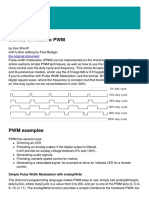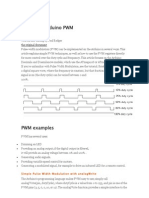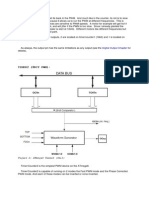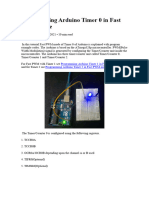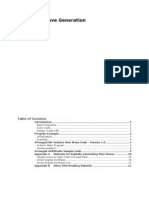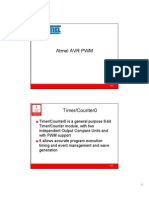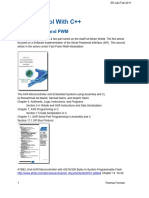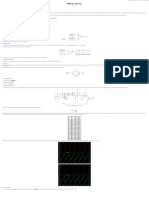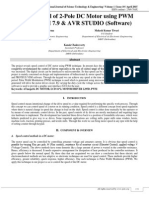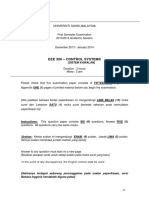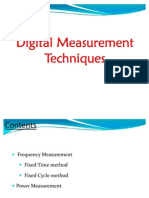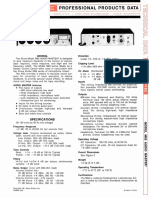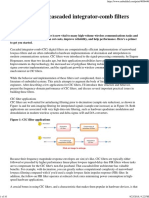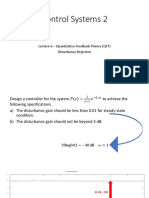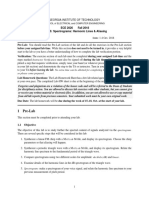0% found this document useful (0 votes)
32 views29 pagesMaes Final Lecture 02 PWM v3
Pulse Width Modulation (PWM) is a digital technique used to simulate analog signals by varying the duration of on-off patterns, allowing control of devices like LEDs and motors. The document explains the implementation of PWM in Arduino, including sample code and the differences between Fast PWM and Phase Correct PWM modes. It also details how to calculate duty cycles and frequencies for PWM signals, providing essential information for embedded systems applications.
Uploaded by
Sadman HossainCopyright
© © All Rights Reserved
We take content rights seriously. If you suspect this is your content, claim it here.
Available Formats
Download as PDF, TXT or read online on Scribd
0% found this document useful (0 votes)
32 views29 pagesMaes Final Lecture 02 PWM v3
Pulse Width Modulation (PWM) is a digital technique used to simulate analog signals by varying the duration of on-off patterns, allowing control of devices like LEDs and motors. The document explains the implementation of PWM in Arduino, including sample code and the differences between Fast PWM and Phase Correct PWM modes. It also details how to calculate duty cycles and frequencies for PWM signals, providing essential information for embedded systems applications.
Uploaded by
Sadman HossainCopyright
© © All Rights Reserved
We take content rights seriously. If you suspect this is your content, claim it here.
Available Formats
Download as PDF, TXT or read online on Scribd
/ 29




